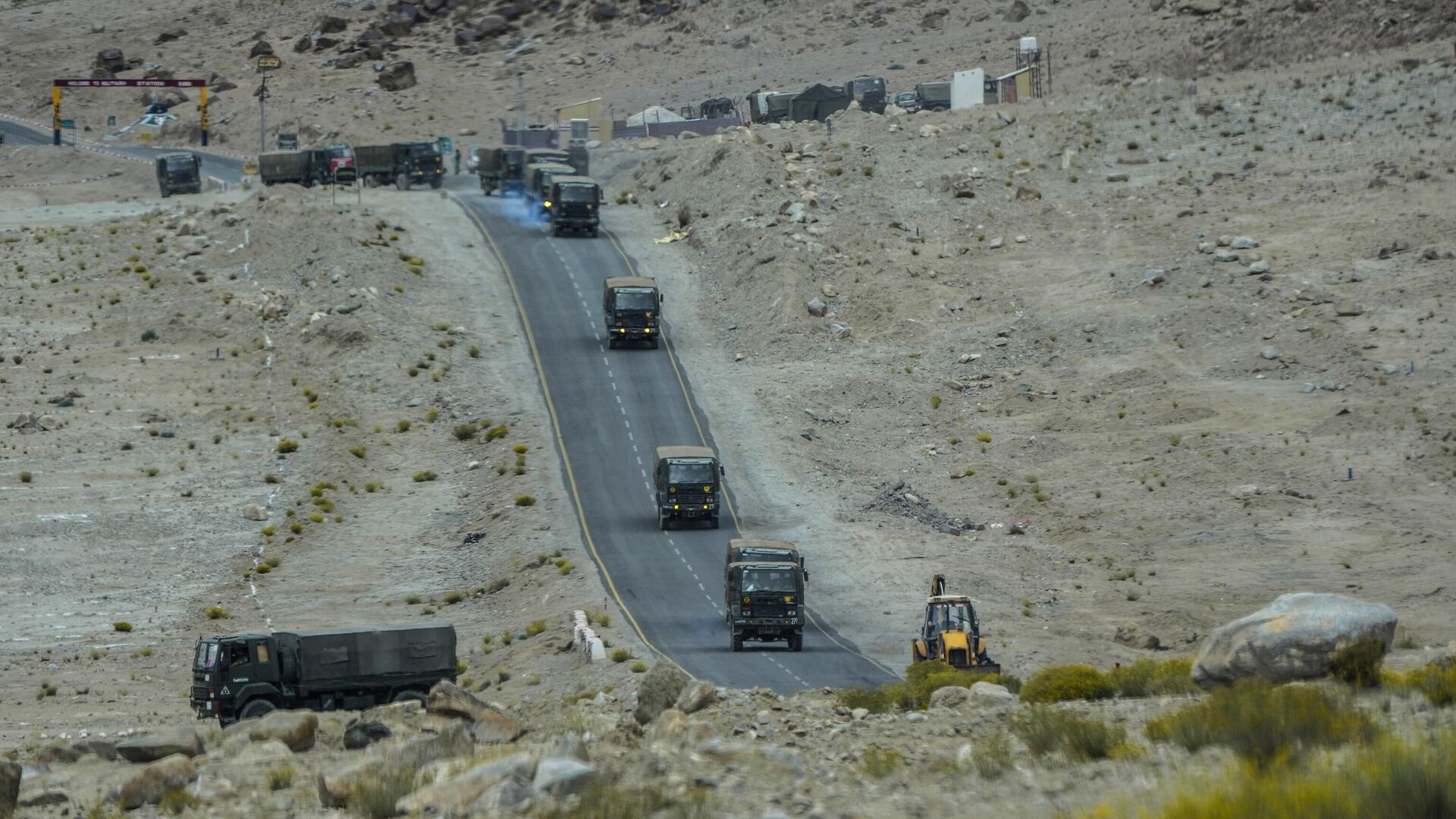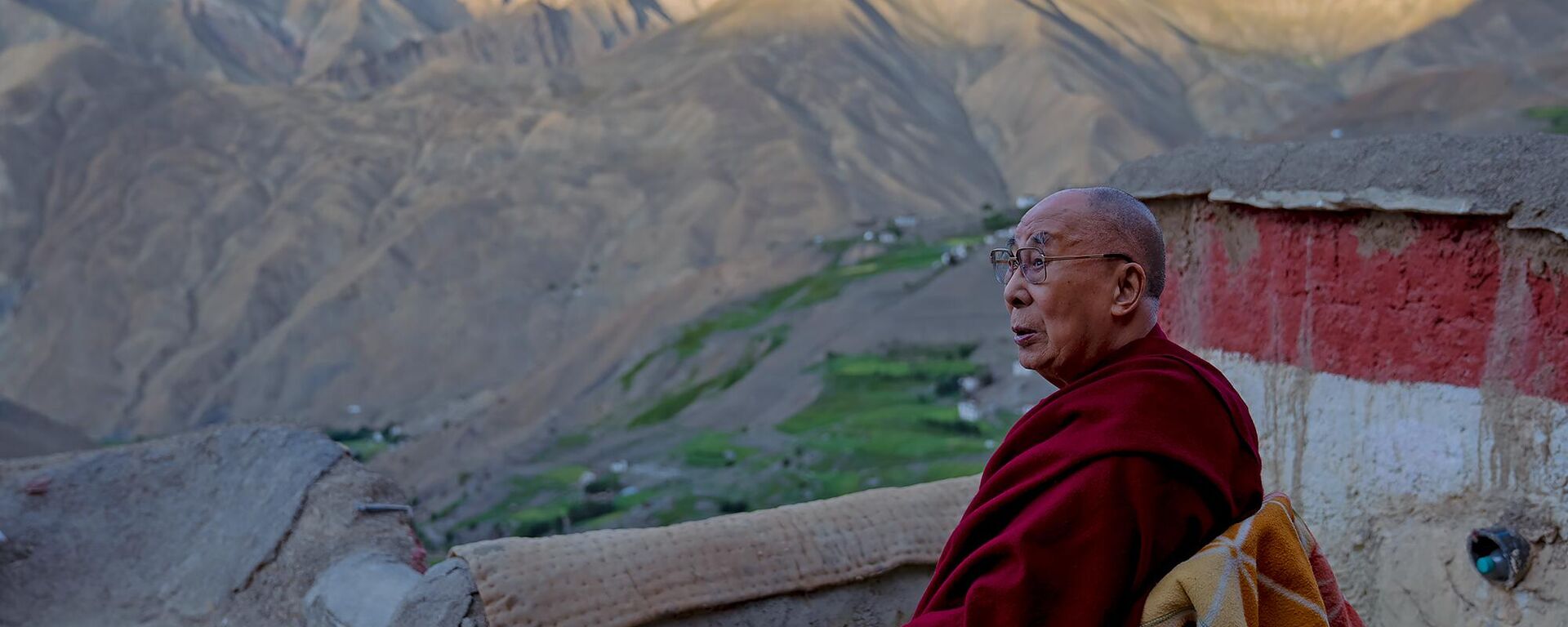https://sputniknews.in/20221213/ex-indian-nsc-member-reflects-on-arunachal-clash-with-chinese-army-50894.html
Ex-Indian NSC Member Reflects on Arunachal Clash With Chinese Army
Ex-Indian NSC Member Reflects on Arunachal Clash With Chinese Army
Sputnik India
Defense Minister Rajnath Singh on Tuesday said PLA troops had tried to transgress the de-facto border between India and China, with troops from both countries... 13.12.2022, Sputnik India
2022-12-13T18:38+0530
2022-12-13T18:38+0530
2022-12-22T19:11+0530
south asia
china
ladakh
sputnik opinion
indian army
people's liberation army (pla)
border tensions
https://cdn1.img.sputniknews.in/img/07e6/0c/0d/65813_0:160:3073:1888_1920x0_80_0_0_4e01b1ecc87b8128e29e22db1a4825c8.jpg
Reacting to the clash in Arunachal Pradesh, the Chinese Foreign Ministry on Tuesday said the situation is "stable" on its border with India."As far as we understand, the China-India border situation is stable overall," Foreign Ministry spokesman Wang Wenbin said, adding that the two sides had "maintained unobstructed dialogue on the border issue through diplomatic and military channels."Prof. Bharat Karnad, a former member of India's National Security Council (NSC) and security analyst, shared with Sputnik his views on the latest incident on the Line of Actual Control (LAC).Sputnik: The Indian Army and China's People's Liberation Army (PLA) clashed in Yangtse in Tawang on December 9. The two neighbors are currently engaged in both military and diplomatic talks in order to resolve the border deadlock in Ladakh. Is it possible that the face-off in the Arunachal sector was not an accident?Bharat Karnad: The Chinese government never does anything that's not preplanned. The clash in Yangtse, in the Tawang District of Arunachal Pradesh, fits the bill. This is also indicated by the fact that the PLA troops came armed for a fight minus small arms, but with wooden clubs with embedded nails, etc. -- weapons of a kind that they previously used in the deadly Galwan encounter two-and-a-half years ago.Sputnik: Do you regard this as part of a Chinese design to preempt the possibility of a future Dalai Lama being identified at the birthplace of the sixth Dalai Lama?Bharat Karnad: China is intent on zeroing out Lamaist Buddhism in Chinese-occupied Tibet (COT) -- that's always been the long-term goal. Sputnik: What kind of preparation -- both military and infrastructure-wise -- does India have in the Arunachal region? Does it lack capabilities in this particular sector?Bharat Karnad: The XXXIII Corps -- the largest corps in the Indian Army -- is responsible for defending the Line of Actual Control (LAC) in the northeast. It is postured to take on the PLA, and is adequately equipped with sufficient stock of prepositioned stores to conduct operations even in the dead of winter, should Beijing choose to initiate hostilities.Sputnik: Do you consider border tensions along the LAC as a persistent issue?Bharat Karnad: Keeping the LAC unsettled with minor skirmishes and armed intrusions and otherwise to maintain a high level of tension is the Chinese strategy to keep the Indian army on its toes and tire it out. It's because maintaining constant vigil at high altitudes is a damnably difficult business. Such a military strategy is what Beijing employs as a means of pressuring the Indian government into making concessions at the negotiating table.The views and opinions expressed in this interview are those of the expert and do not necessarily reflect the position of Sputnik.
https://sputniknews.in/20221213/dalai-lama-shares-best-weapon-to-defend-yourself-28062.html
south asia
china
ladakh
Sputnik India
feedback.hindi@sputniknews.com
+74956456601
MIA „Rossiya Segodnya“
2022
News
en_IN
Sputnik India
feedback.hindi@sputniknews.com
+74956456601
MIA „Rossiya Segodnya“
Sputnik India
feedback.hindi@sputniknews.com
+74956456601
MIA „Rossiya Segodnya“
india china border clash in tawang, yangtse sector, border clash, indian defence minister rajnath singh on border clash with china, tibet, military clash in tawng sector, line of actual control (lac), india's national security council (nsc)
india china border clash in tawang, yangtse sector, border clash, indian defence minister rajnath singh on border clash with china, tibet, military clash in tawng sector, line of actual control (lac), india's national security council (nsc)
Ex-Indian NSC Member Reflects on Arunachal Clash With Chinese Army
18:38 13.12.2022 (Updated: 19:11 22.12.2022) Defense Minister Rajnath Singh on Tuesday said PLA troops had tried to transgress the de-facto border between India and China, with troops from both countries being injured.
Reacting to the clash in Arunachal Pradesh, the Chinese Foreign Ministry on Tuesday said the situation is "stable" on its border with India.
"As far as we understand, the China-India border situation is stable overall," Foreign Ministry spokesman Wang Wenbin said, adding that the two sides had "
maintained unobstructed dialogue on the border issue through diplomatic and military channels."
Prof. Bharat Karnad, a former member of India's National Security Council (NSC) and security analyst, shared with Sputnik his views on the latest incident on the Line of Actual Control (LAC).
Sputnik: The Indian Army and China's People's Liberation Army (PLA) clashed in Yangtse in Tawang on December 9. The two neighbors are currently engaged in both military and diplomatic talks in order to resolve the border deadlock in Ladakh. Is it possible that the face-off in the Arunachal sector was not an accident?
Bharat Karnad: The Chinese government never does anything that's not preplanned. The clash in Yangtse, in the Tawang District of Arunachal Pradesh, fits the bill.
This is also indicated by the fact that the PLA troops came armed for a fight minus small arms, but with wooden clubs with embedded nails, etc. -- weapons of a kind that they previously used in the deadly Galwan encounter two-and-a-half years ago.
Sputnik: Do you regard this as part of a Chinese design to preempt the possibility of a future Dalai Lama being identified at the birthplace of the sixth Dalai Lama?
Bharat Karnad: China is intent on zeroing out Lamaist Buddhism in Chinese-occupied Tibet (COT) -- that's always been the long-term goal.
This objective has acquired urgency because of the current Dalai Lama's age, which Beijing fears may prompt His Holiness to name a Tibetan child from the Tibetan exile community in India as his successor. It will mean that China's attempts to subdue Tibet by integrating it into the mainland's Han-Communist culture will continue to be complicated.
Sputnik: What kind of preparation -- both military and infrastructure-wise -- does India have in the Arunachal region? Does it lack capabilities in this particular sector?
Bharat Karnad: The XXXIII Corps -- the largest corps in the Indian Army -- is responsible for defending the Line of Actual Control (LAC) in the northeast.
It is postured to take on the PLA, and is adequately equipped with sufficient stock of prepositioned stores to conduct operations even in the dead of winter, should Beijing choose to initiate hostilities.
Sputnik: Do you consider border tensions along the LAC as a persistent issue?
Bharat Karnad: Keeping the LAC unsettled with minor skirmishes and armed intrusions and otherwise to maintain a high level of tension is the Chinese strategy to keep the Indian army on its toes and tire it out. It's because maintaining constant vigil at high altitudes is a damnably difficult business.
Such a military strategy is what Beijing employs as a means of pressuring the Indian government into making concessions at the negotiating table.
The views and opinions expressed in this interview are those of the expert and do not necessarily reflect the position of Sputnik.


